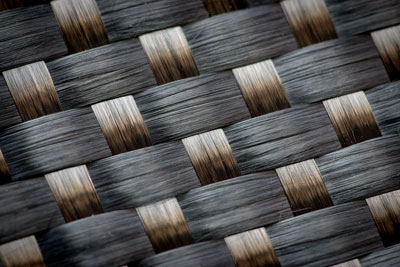| Jun 04, 2014 |
What if the body of the car itself was a battery?
|
|
(Nanowerk News) Battery weight has long vexed engineers designing electric cars for the mass market. Bigger batteries are needed to power a car for longer distances, but their weight in turn requires the car to expend more energy.
|
|
But what if the body of the car itself was a battery?
|
|
Researchers at Sweden's KTH Royal Institute of Technology have found a promising solution with carbon fibre.
|
|
Eric Jacques, a researcher in vehicle and aerospace engineering at KTH, says carbon fibre can fill two functions in an electric car: as a lightweight composite reinforcement material for the car’s body, and as an active electrode in lithium ion batteries.
|
|
“The objective of our research was to develop a structural battery consisting of multifunctional lightweight materials that simultaneously manage mechanical loads, and store electrical energy,” says Eric Jacques, a researcher in Aeronautical and Vehicle Engineering at KTH.
|
|
“This can result in a weight reduction for electric vehicles,” Jacques says.
|
 |
| Woven carbon fibre can act as an electrode for lithium ion batteries. (Photo: Peter Larsson)
|
|
He says carbon fibre offers a viable alternative to graphite. Lithium can be inserted into the carbon fibre microstructure and the carbon fibre acts as a good conductor. The carbon fibre which the KTH researchers have worked with is very light and has a continuous structure and excellent mechanical properties, Jacques says
|
|
“The research project has demonstrated very good results, but we have some work to do before we can display finished batteries.”
|
|
The project is run as a partnership between three professors at KTH: Göran Lindbergh, Chemical Engineering; Mats Johansson, Fibre and Polymer Technology; and Dan Zenkert, Aeronautical and Vehicle Engineering. The research is done in cooperation with Swerea SICOMP and Luleå Insitute of Technology.
|
|
Johansson says the work is about improving the mechanical properties of batteries – so that it not only stores energy but is part of the design.
|
|
“For example, the hood of the car could be part of the battery,” Johansson says, adding that similar consolidation of battery and structural material could be used in mobile phones and other battery-operated devices.
|

